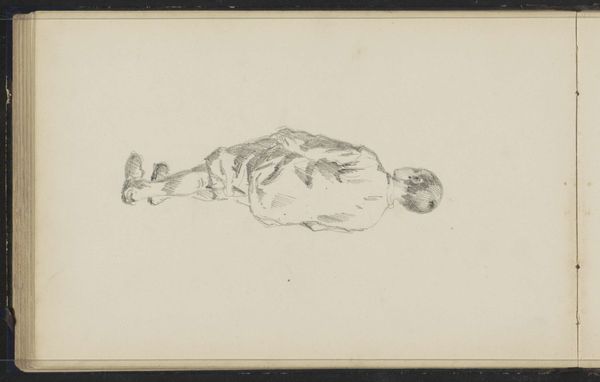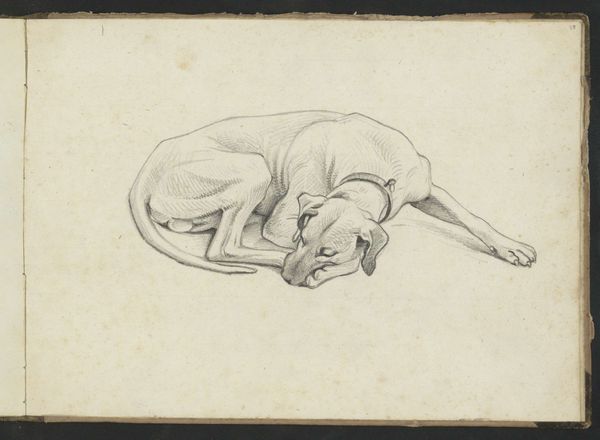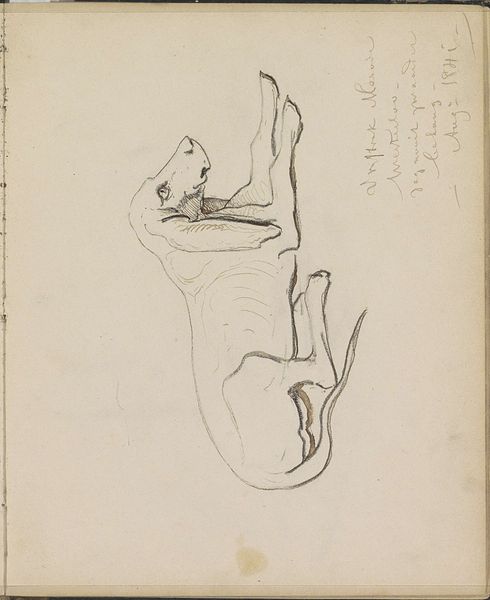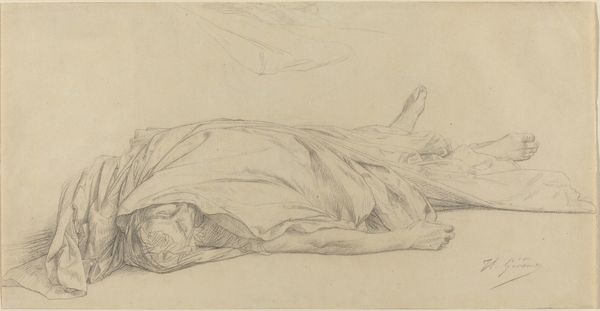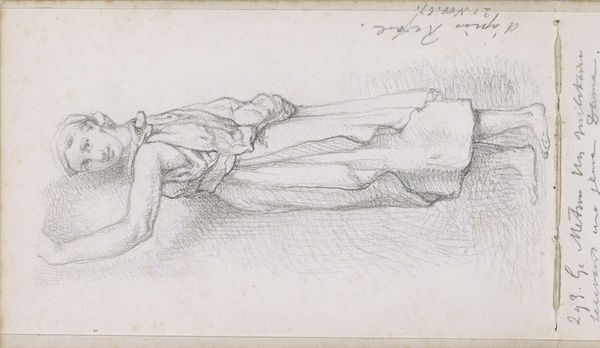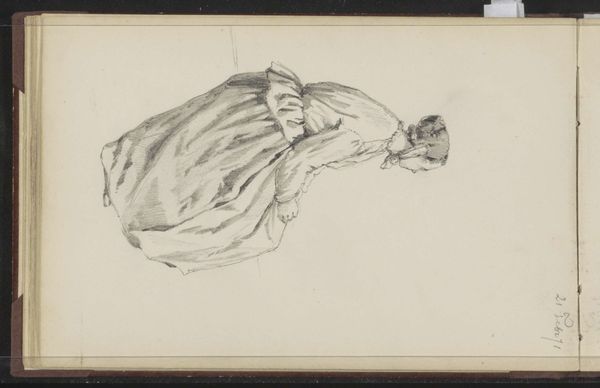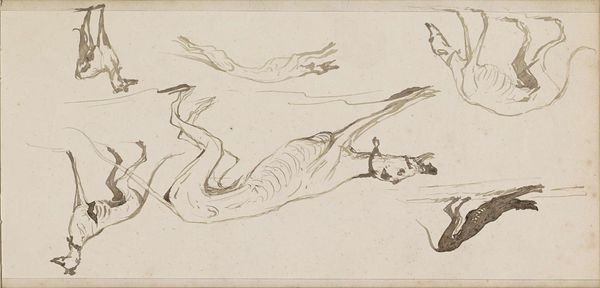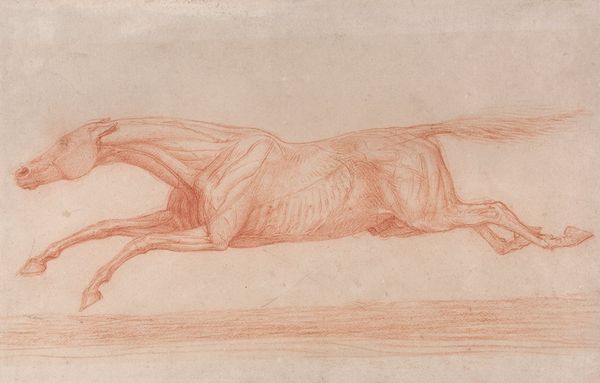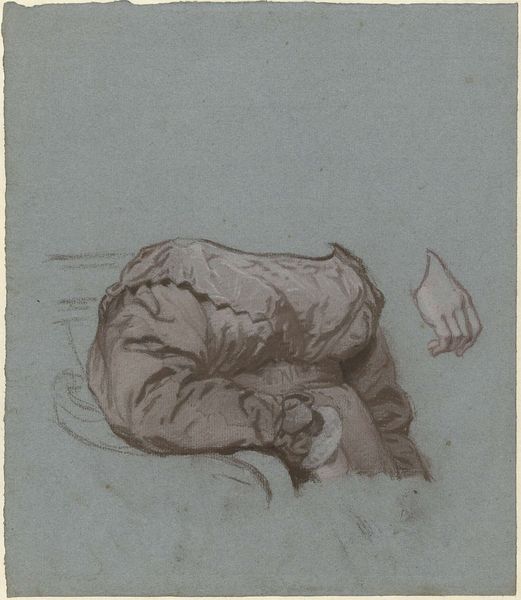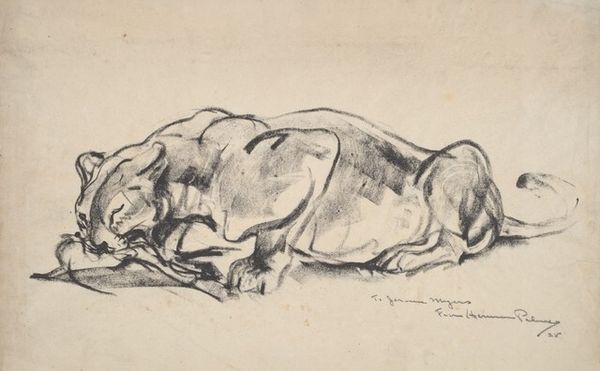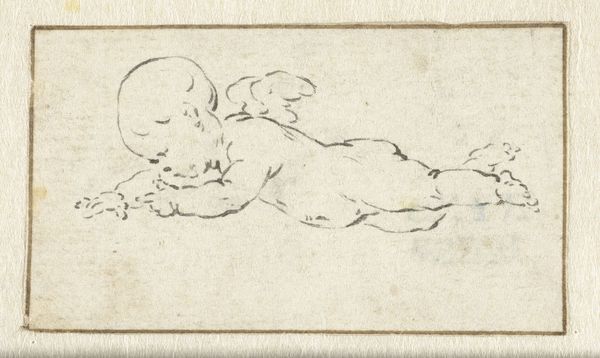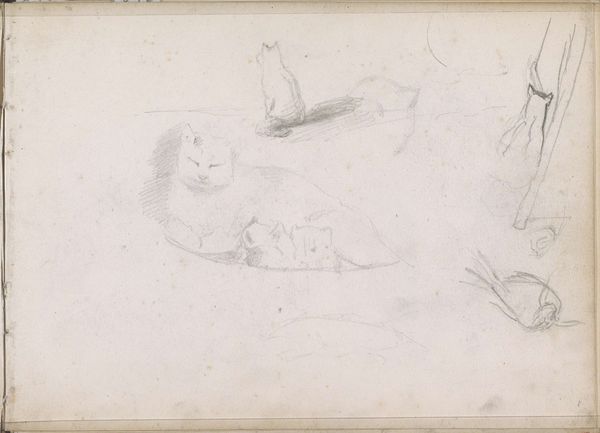
drawing, pencil
#
portrait
#
drawing
#
animal
#
dog
#
figuration
#
pencil
#
realism
Copyright: Rijks Museum: Open Domain
Curator: Ah, here we have Johannes Tavenraat’s "Liggende hond," or "Reclining Dog," a pencil drawing from 1839 residing here at the Rijksmuseum. Editor: Immediately, there's this stillness... it's the opposite of the bounding, tail-wagging image you expect. The sparseness really draws you in to the animal’s quiet presence. Curator: Precisely! And think about the artistic context. 1839—Europe's on the cusp of enormous social change. Industrialization, urbanization... Dogs, particularly in art, often stood as symbols of loyalty and domesticity. Were people maybe clinging to older ideas? Editor: It feels melancholic. Look at how lightly the pencil renders the ribs – you can almost feel the animal breathing. Is this a pet, a working animal exhausted after labor, or some artistic invention? The context would inform whether the realism served sentimental purposes, or if it were to reveal something critical about societal conditions, eh? Curator: Tavenraat's career is intriguing. A student of landscape painting, he developed an appreciation for domestic realism. Did he maybe capture a faithful family pet at rest, offering viewers intimacy and connection, or does the animal act as a metaphor? Is he maybe asking us something more by contrasting realism and what an animal signifies? Editor: Well, if the goal were photo-realism, then no; his emphasis seems aimed less toward representation and more towards expression of affect, even with limited strokes. But maybe, that melancholic affect wasn't the explicit objective? Perhaps the intention was merely to create a beautiful impression; one to inspire empathy for the animal. And is that itself "sentimental?" These are still different from each other. Curator: True, perhaps the image invites viewers to find a sense of beauty and tenderness toward the dog. One where it becomes harder to reduce animals to utility. A quietly political act. Editor: Or, it's just a dog napping! Art doesn't always have to shoulder all of this political and representational burden, you know. But pondering the artist’s social environment, I think, can offer new pathways for interpretations about artistic intention. Curator: Indeed. In this intimate glimpse of a resting dog, we're given the chance to see how the boundary between observer and observed is rather slim; perhaps to discover a sense of quiet solidarity with the living world. Editor: Maybe we should all take a moment to relax, reflect, and enjoy art's ability to let our minds wander. Now I want to go home and sketch my cat.
Comments
No comments
Be the first to comment and join the conversation on the ultimate creative platform.
